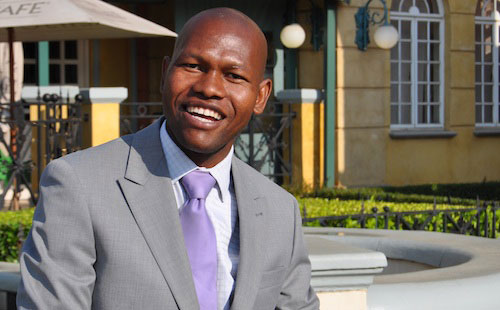
Construction of a new, high-capacity submarine telecommunications cable system linking SA, Angola, Nigeria and Brazil should start early next year and be ready for service some time in 2012.
That’s the word from Lawrence Mulaudzi, MD of eFive Telecoms, the SA-based company that is driving the project.
The system, which could cost as much as US$400m, will involve extending the Main One cable that links Nigeria and Europe to SA, with a landing station in Cape Town.
The system will then extend around SA’s coastline, ending in Mtunzini on the KwaZulu-Natal north coast, where it will connect onward on the Seacom cable that runs up Africa’s east coast to India and through the Mediterranean Sea to France.
A trunk will also be built from Luanda in Angola to either Fortaleza or Rio de Janeiro in Brazil. This will make it the first-ever system to cross the Atlantic Ocean between Southern Africa and South America.
Mulaudzi tells TechCentral that a final decision on the design capacity of the system hasn’t been made yet. The trunk from Angola to Brazil will probably consist of two fibre pairs, with the leg from Nigeria to SA made up of between two and four fibre pairs.
eFive Telecoms has already signed memorandums of understanding with Seacom and Main One to establish a cable system encircling the continent.
It has also signed agreements with a large telecoms operator in Brazil — the name of which will only be disclosed in a ceremony on 27 September — and with a US operator that operates networks in the Caribbean.
Mulaudzi says the Angola to Brazil trunk will provide an alternative route for traffic flowing between Africa and South America and North America, including the giant US market. The system will provide links to countries such as Bermuda, Venezuela and Uruguay.
It’s been decided to build the transatlantic cable from Angola, not SA, because, like Brazil, the African nation has Portuguese as its official language.
At about 6 800km apart, the two countries also offer a shorter route across the ocean. And growth opportunities in Angola are enormous because of that country’s mineral and oil wealth, Mulaudzi says.
He says the system hasn’t been named yet, though the leg to South America has provisionally been dubbed the Brazil to Africa Cable. The section from Nigeria to SA may be called Main One Phase 2, though nothing has been confirmed with Main One.
eFive Telecoms, which is in the process of securing a network licence from the Independent Communications Authority of SA, has commissioned Alcatel-Lucent to build the submarine cable system and maintain it. The French telecoms equipment manufacturer has begun an environmental impact assessment survey.
Nova Capital Africa, an investment bank with offices in New York and SA, is acting as lead adviser and is charged with raising the capital needed to build the cable system.
Mulaudzi says a large number of potential investors have expressed interest, but adds that he’s not in a position yet to name them.
Mulaudzi, who has worked previously at Siemens and at the department of communications, says his goal with eFive Telecoms is to build infrastructure that will help the continent become globally competitive.
He says it’s important for the country to have direct connectivity to other big emerging markets, including Brazil, Russia, India and China (the Bric countries), if SA is to encourage foreign direct investment.
But is there room for yet another cable along Africa’s west coast? Already, the 5,1Tbit/s West African Cable System (Wacs) and the Africa Coast to Europe cables are due to come on-stream in the next two years.
“We are ready for competitors,” says Mulaudzi. “However, in the submarine infrastructure market, these systems also complement each other, offering redundancy. If Wacs has a challenge in the future, our system could be used as a backup.” — Duncan McLeod, TechCentral
- Subscribe to our free daily newsletter
- Follow us on Twitter or on Facebook




